
by Phillip Kindschi | Feb 15, 2016 | Physical Therapy
Does your child trip and fall frequently? Does he/she seem uncoordinated or clumsy?
If so, PLAN ON ATTENDING THE FREE PARENT TRAINING AT THERAPYWORKS ON MARCH 3, 2016 AT 7:00PM!
SPONSORED BY THE TW PHYSICAL THERAPY DEPARTMENT!
- Find out if your child is more than just “clumsy”.
- Discover if your child is developing appropriately.
- Understand what it means to be “uncoordinated”.
- Learn about ORTHOTICS and if they are appropriate for your child.
- Determine if your child will benefit from Physical Therapy.
Reserve your spot! email info@therapyworkstulsa.com or call 918-663-0606 ext 289
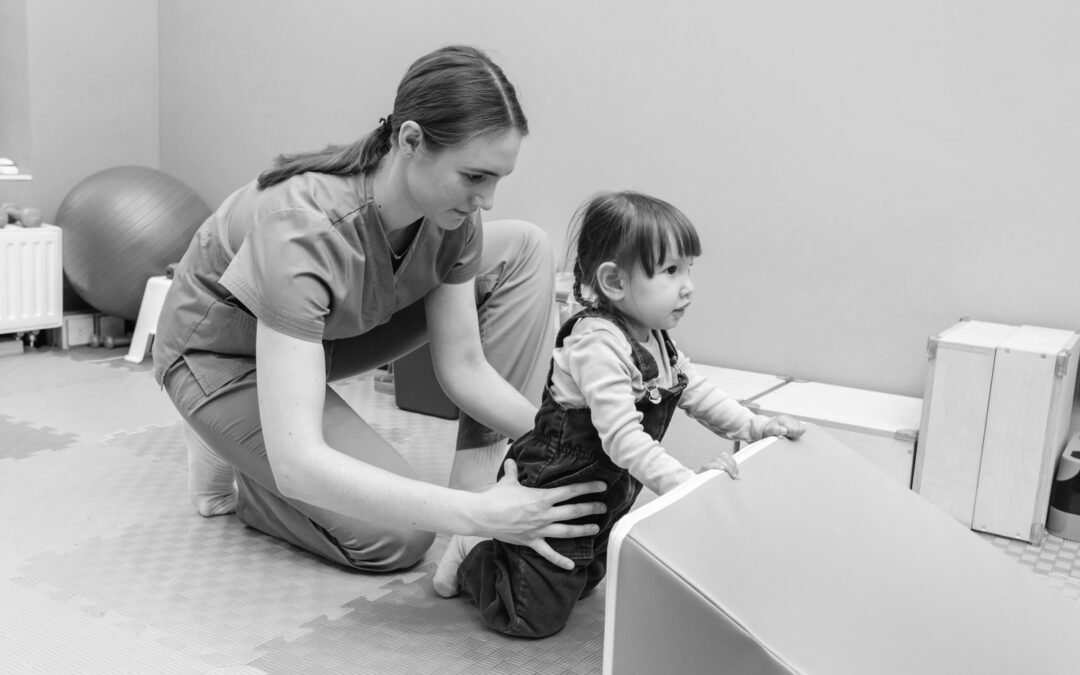
by Phillip Kindschi | Oct 29, 2014 | Physical Therapy
Physical Therapy (PT) was first practiced in Great Britain in 1894, by a group of four nurses. Physical therapy was performed mostly on people who had been injured in WWI. The nurses became known as “reconstruction aides” and continue to be trained with an increase in physical education and massage therapy. Other countries soon after adapted the form of “rehabilitation therapy” and PT began to grow. One of the first schools in the United Stated to offer a physical therapy program was in 1914 at Reed College in Portland, Oregon.
In 1921 Mary McMillian founded the first known association for physical therapy and named it the American Women’s Physical Therapy Association. Mary McMillian became known as the “Mother of Physical Therapy” due to her significant contributions to the profession. In the 1930’s men were admitted and the first Code of Ethics was introduced.
PT became more widely excepted as the demand increased due to the nation wide polio epidemic during the 1940’s and 1950’s. During this period the association was renamed to the American Physical Therapy Association (APTA) and policies and sections were created to promote and develop specific areas of PT. PT also began to be more utilized in settings other than hospitals. Public schools, universities, skilled nursing facilities, medical centers and private owned rehabilitation centers became more popular as the years passed.
Today due to the rapid increase in current medicine, PT continues to grown and help patients daily. New treatments are being discovered and utilized on a regular basis. Physical therapy can be provided to help with a number of diseases and injuries ranging from common back pain to a severe stroke patient.
Laci DiLibero, PTA, CKTP
TherapyWorks Physical Therapy Department Manager
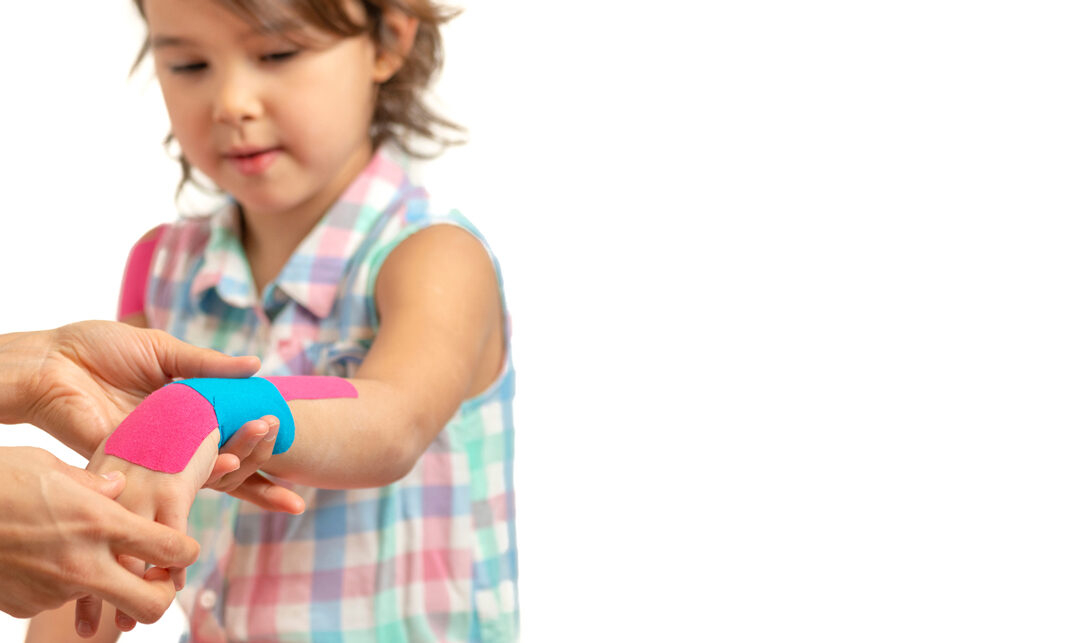
by Phillip Kindschi | Oct 6, 2014 | Physical Therapy
At Therapyworks, many of our occupational and physical therapists are Certfied Kinesio Tape Practitioners. Kinesio Taping has many beneficial uses, so let’s learn more about pediatric Kinesio Taping!
Kinesiology Tape is a thin, stretchy, elastic cotton strip with an acrylic adhesive. Therapeutic Kinesiology Tape can benefit a wide variety of musculoskeletal and sports injuries, plus inflammatory conditions.
The Kinesio Taping® Method is a rehabilitative taping technique that is designed to facilitate the body’s natural healing
process while providing support and stability to muscles and joints without restricting the body’s range of motion as well as providing extended soft tissue manipulation to prolong the benefits of manual therapy administered within the clinical setting. (www.kinesiotaping.com)
How can Kinesio Tape help your child? :
- Relieves pain
- Loosens tight muscles- Activates weak and tired muscles
- Helps in biomechanical alignment
- Provides stability
A few things KinesioTape can be used for in Physical Therapy:
- Cerebral Palsy
- Torticollis- Back pain, Shoulder pain, Knee pain, Foot pain
- In toeing
- Toe walking
- Sports injuries
- Postural control
Ask one of our Physical Therapist staff for more information on Kinesio Taping!!!
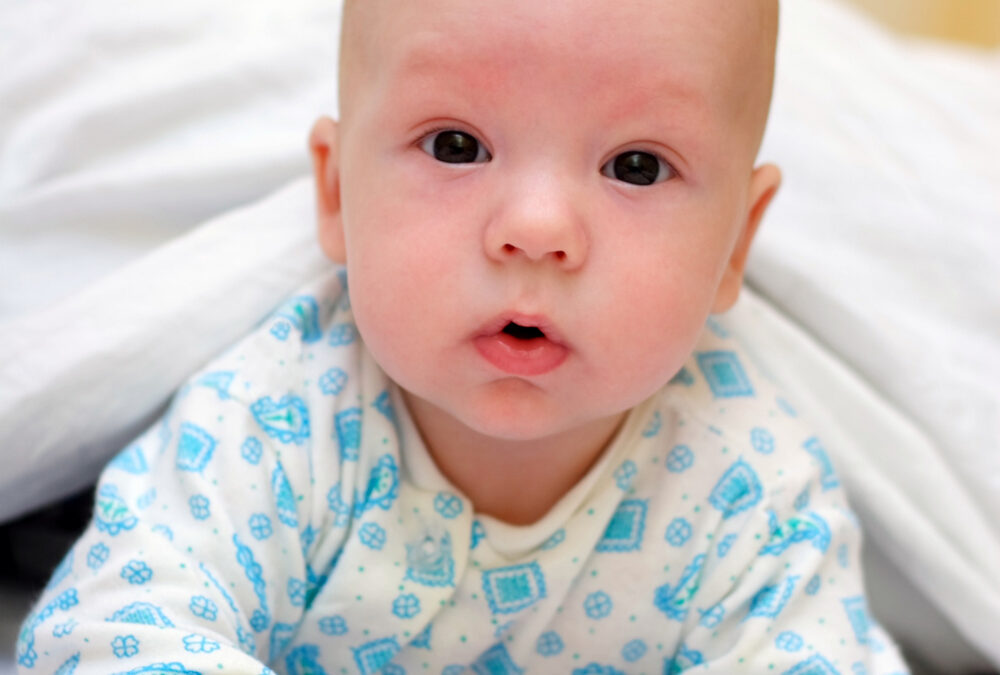
by Phillip Kindschi | Apr 2, 2014 | Occupational Therapy, Physical Therapy
APRIL IS OCCUPATIONAL THERAPY MONTH!
Everyone always thinks that tummy time is important only for babies but I want to tell you it is actually important for kids of all ages. Tummy time, also known as prone on elbows, is a developmental position in which the child is on their belly on a flat surface and propped up on their elbows. I recommend this position for all of my children especially my older kids and here is why…
- When the neck is extended it stimulates the brain stem which can be very regulating to the sensory system
- It helps build strength and stability through the shoulders and upper arms which is so important in the development of fine and visual motor skills
- It also promotes increased visual skills such as tracking a moving object which is important to the development of higher level skills such as academics and gross motor acquisition
 Here are some suggestions for activities while on tummy:
Here are some suggestions for activities while on tummy:
- Coloring, handwriting or homework tasks. I like to use a 3” binder as a slant board to help facilitate grasp while writing or coloring.
- Complete puzzles large or small.
- Watch TV or play a short video game. I recommend only a short period of screen time.
- Use an exercise ball with the child laying belly down while completing a floor task.
- Read a book.
- Play board games.
- Great for children to do at school for circle time, etc.
The ideas are limitless and I encourage parents to get on the floor and interact with their child in that position as well! Remember that the child may only tolerate several minutes at a time, but keep encouraging and persisting and eventually
their endurance will improve.
Have fun!
Erin Kizzar, MOT, OTR/L
OT Department Manager, Therapyworks
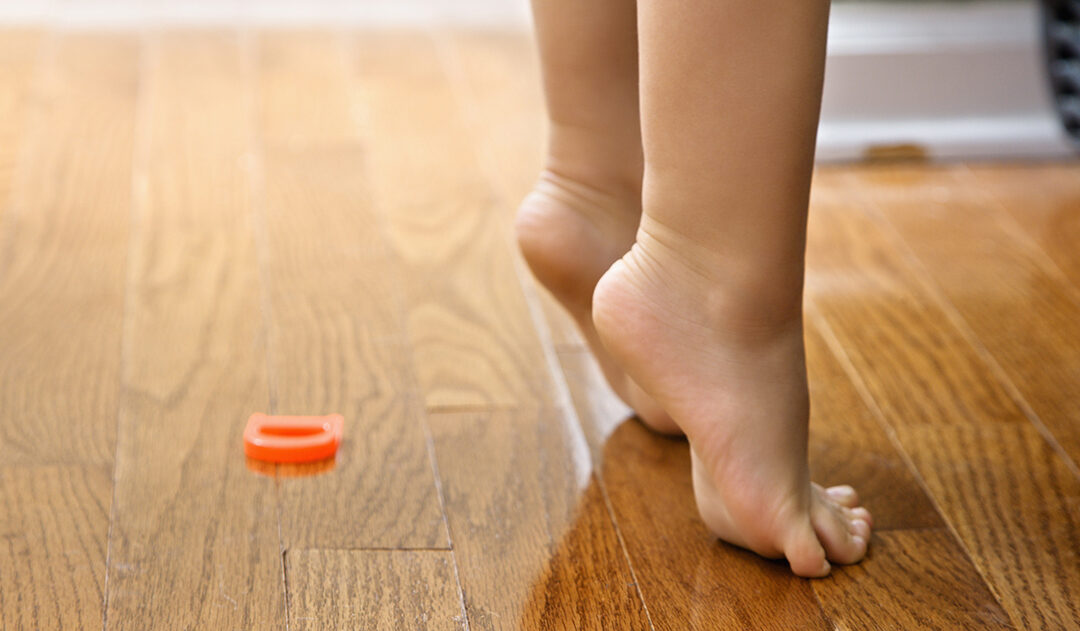
by Phillip Kindschi | Oct 23, 2013 | Physical Therapy
Sure we go up on our toes to reach objects out of our reach, when we are trying to be quiet and not be noticed, when we are trying to step over puddles, etc. Walking on our tip toes becomes a problem when the majority of the time we are walking, running, jumping, etc. is on our toes. Toe walking or tip toeing should be something we do occasionally and not all of the time.
When does this become a concern for children? Toe walking becomes a concern if it continues past the age of two years and is the main way a child walks, runs, jumps, plays, or gets around their everyday environments. Continual toe walking can be as simple as a habit a child has developed or can potentially point towards something happening within the muscles, nerves, tissues, and joints of the body.
Why do some children toe walk when others do not? Sometimes toe walking is related to a child having sensory problems. It could be they do not like how the ground feels on their feet, so they begin toe walking to try and limit the amount of time they actually touch the ground with their feet. They may have proprioceptive concerns which mean the way their bodies are positioned in space feels more secure when they are up on their tiptoes. The same is also possible for children with vestibular (or equilibrium) concerns who end up toe walking. They feel more secure and ‘balanced’ on their toes. Another possibility is children who have difficulty with motor control and feel more in control of their body and balance when they toe walk than when they are flat footed. Most of these areas lead to a child developing a habit of walking on their toes, which is difficult to break, especially the longer they walk on their toes.
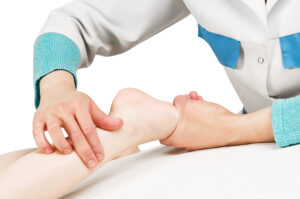 If a child continues to walk on their toes, what are the potential problems which they may encounter? The concern children face with long time toe walking typically is tightening of their calf muscles. The longer a child walks on their toes, the greater the possibility for their calf muscles and their heel cords (muscles and tendons attached to our heels) to become increasingly tighter and potentially form contractures (significant muscle, tendon, and ligament tightness in which the child no longer has the ability to move out of a toe walking position, i.e. they actually become ‘stuck’ in this position). If a child ends up with a contracture of the calf and heel cord, the only solution at that point is surgical correction. If a child presents with a moderate tightening, then serial casting may need to be performed (wearing of casts for at least 4 weeks in a position to allow a long term stretch to the muscles, tendons, and ligaments) to help decrease the muscular tightness. Occasionally, there may be a neurological reason for a child who walks on their toes. This would require meeting with and having tests performed by a neurologist.
If a child continues to walk on their toes, what are the potential problems which they may encounter? The concern children face with long time toe walking typically is tightening of their calf muscles. The longer a child walks on their toes, the greater the possibility for their calf muscles and their heel cords (muscles and tendons attached to our heels) to become increasingly tighter and potentially form contractures (significant muscle, tendon, and ligament tightness in which the child no longer has the ability to move out of a toe walking position, i.e. they actually become ‘stuck’ in this position). If a child ends up with a contracture of the calf and heel cord, the only solution at that point is surgical correction. If a child presents with a moderate tightening, then serial casting may need to be performed (wearing of casts for at least 4 weeks in a position to allow a long term stretch to the muscles, tendons, and ligaments) to help decrease the muscular tightness. Occasionally, there may be a neurological reason for a child who walks on their toes. This would require meeting with and having tests performed by a neurologist.
What can you do to help your child if they do walk on their toes? There are many ways to help if your child walks on their toes. If you have concerns and your child has never received any form of therapy, contact your primary care physician with your concerns. They will then be able to make a referral for your child to receive an evaluation by a therapist. Typically, your child will be referred to a physical therapist to determine how your child’s toe walking is impacting their everyday life and to help with ideas to help decrease and eventually extinguish their toe walking habit. If your child currently is receiving other therapies and you have concerns, talk to your provider. They can help your child receive the most appropriate intervention and let you know how to go about getting the necessary referrals.
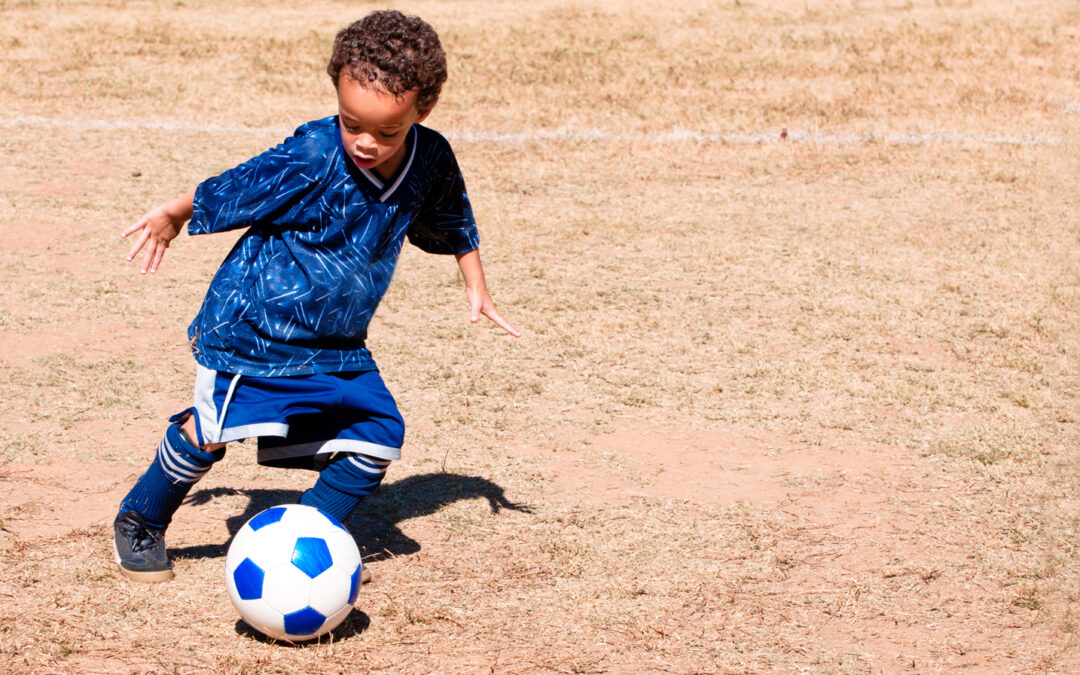
by Phillip Kindschi | Oct 15, 2013 | Physical Therapy
The PT Department at TherapyWorks in Tulsa frequently hears the question “What should my child be doing at this age”? It’s easy to forget what we did as a young child and when gross motor milestones should be achieved. Below is a list of common gross motor milestones for school aged children and the age range they should be accomplished.
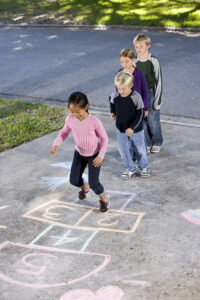 Pre-School Age (3-4 Years)
Pre-School Age (3-4 Years)
- Throws ball forward 10 feet
- Walks on a line 10 feet
- Hops 2-10 times on 1 foot
- Jumps forward distances of up to 2 feet
- Jumps over obstacles up to 12 inches off the ground
- Throws and catches a small ball
- Runs fast and avoids obstacles
Early School Age (5-8 Years)
- Skips on alternate feet
- Gallops
- Hopscotch
- Balances on 1 foot up to 10 seconds
- Jumps with rhythm and control (jump rope)
- Bounces large ball
- Kicks ball with improved directional control
Later School Age (9-12 Years)
- Mature patterns of movement for throwing, jumping, and running
- Improved balance, coordination, endurance, and attention span
Adolescence (13+ Years)
It is important to note that a rapid growth spurt in size and strength occurs around this age. As children grow there is a significant change in body proportions, center of gravity, and limb lengths. Because of these changes balance skills, coordination, eye-hand coordination, and endurance may plateau as the child adapts to their changing body.





 Here are some suggestions for activities while on tummy:
Here are some suggestions for activities while on tummy:

 If a child continues to walk on their toes, what are the potential problems which they may encounter? The concern children face with long time toe walking typically is tightening of their calf muscles. The longer a child walks on their toes, the greater the possibility for their calf muscles and their heel cords (muscles and tendons attached to our heels) to become increasingly tighter and potentially form contractures (significant muscle, tendon, and ligament tightness in which the child no longer has the ability to move out of a toe walking position, i.e. they actually become ‘stuck’ in this position). If a child ends up with a contracture of the calf and heel cord, the only solution at that point is surgical correction. If a child presents with a moderate tightening, then serial casting may need to be performed (wearing of casts for at least 4 weeks in a position to allow a long term stretch to the muscles, tendons, and ligaments) to help decrease the muscular tightness. Occasionally, there may be a neurological reason for a child who walks on their toes. This would require meeting with and having tests performed by a neurologist.
If a child continues to walk on their toes, what are the potential problems which they may encounter? The concern children face with long time toe walking typically is tightening of their calf muscles. The longer a child walks on their toes, the greater the possibility for their calf muscles and their heel cords (muscles and tendons attached to our heels) to become increasingly tighter and potentially form contractures (significant muscle, tendon, and ligament tightness in which the child no longer has the ability to move out of a toe walking position, i.e. they actually become ‘stuck’ in this position). If a child ends up with a contracture of the calf and heel cord, the only solution at that point is surgical correction. If a child presents with a moderate tightening, then serial casting may need to be performed (wearing of casts for at least 4 weeks in a position to allow a long term stretch to the muscles, tendons, and ligaments) to help decrease the muscular tightness. Occasionally, there may be a neurological reason for a child who walks on their toes. This would require meeting with and having tests performed by a neurologist.
 Pre-School Age (3-4 Years)
Pre-School Age (3-4 Years)